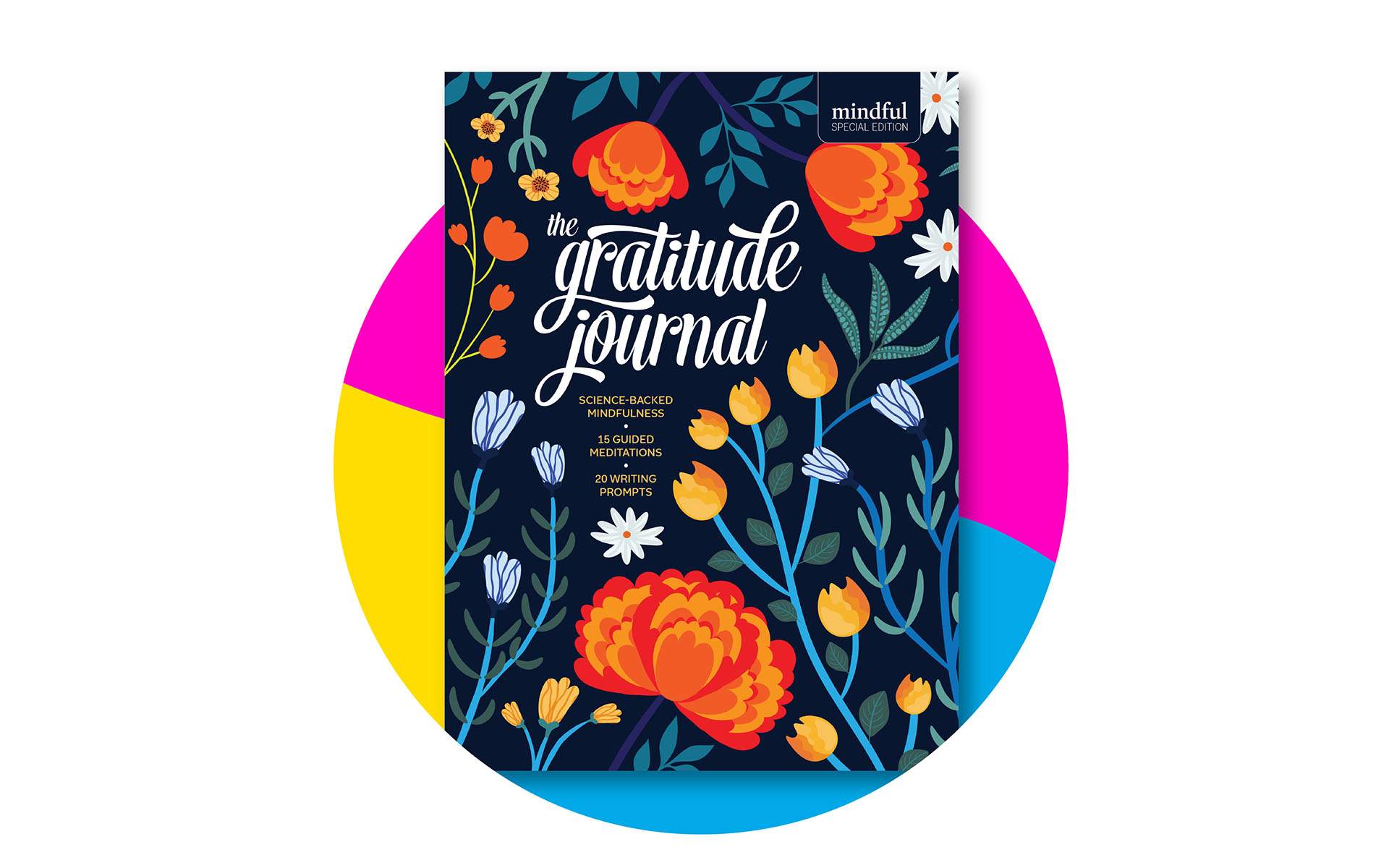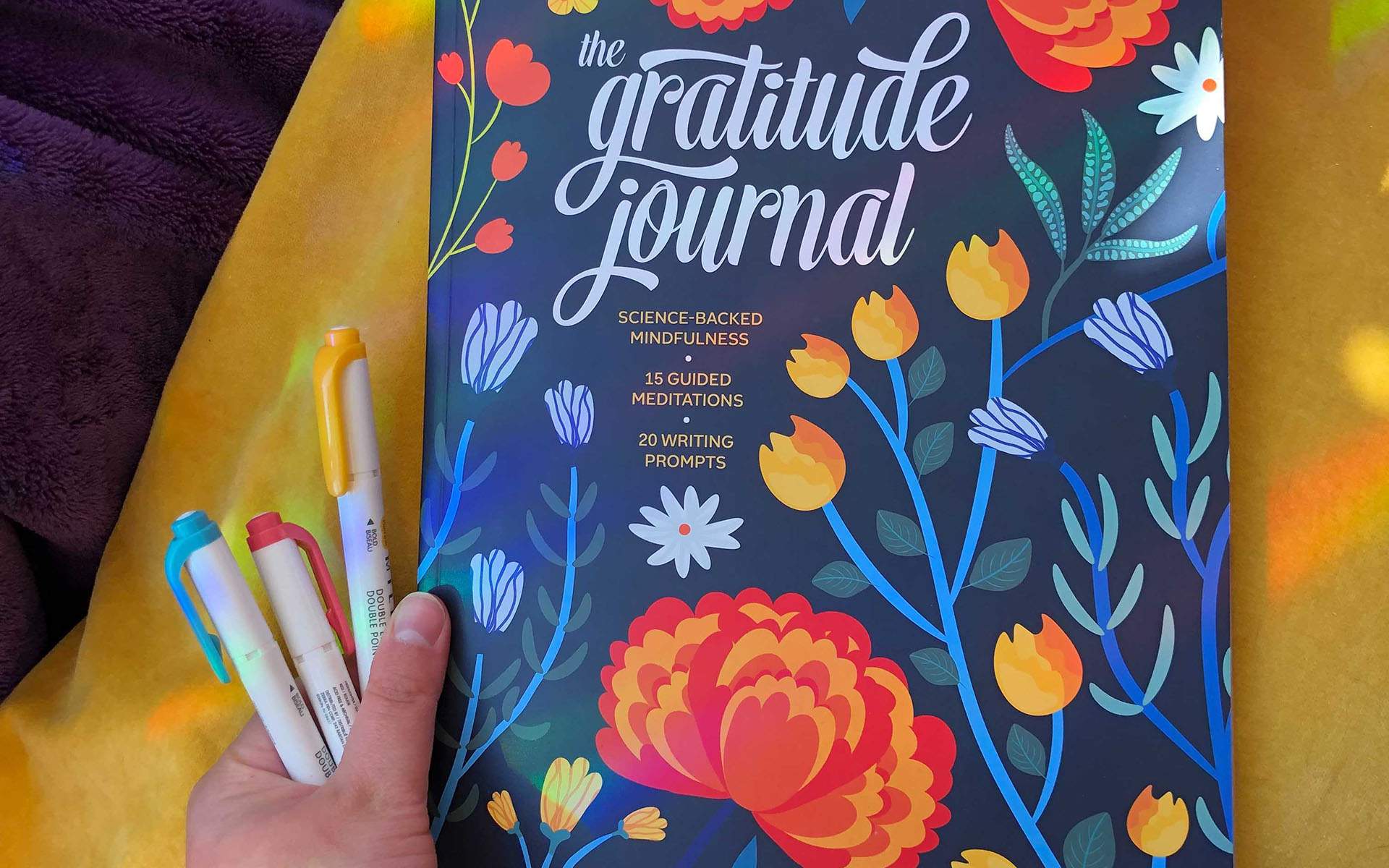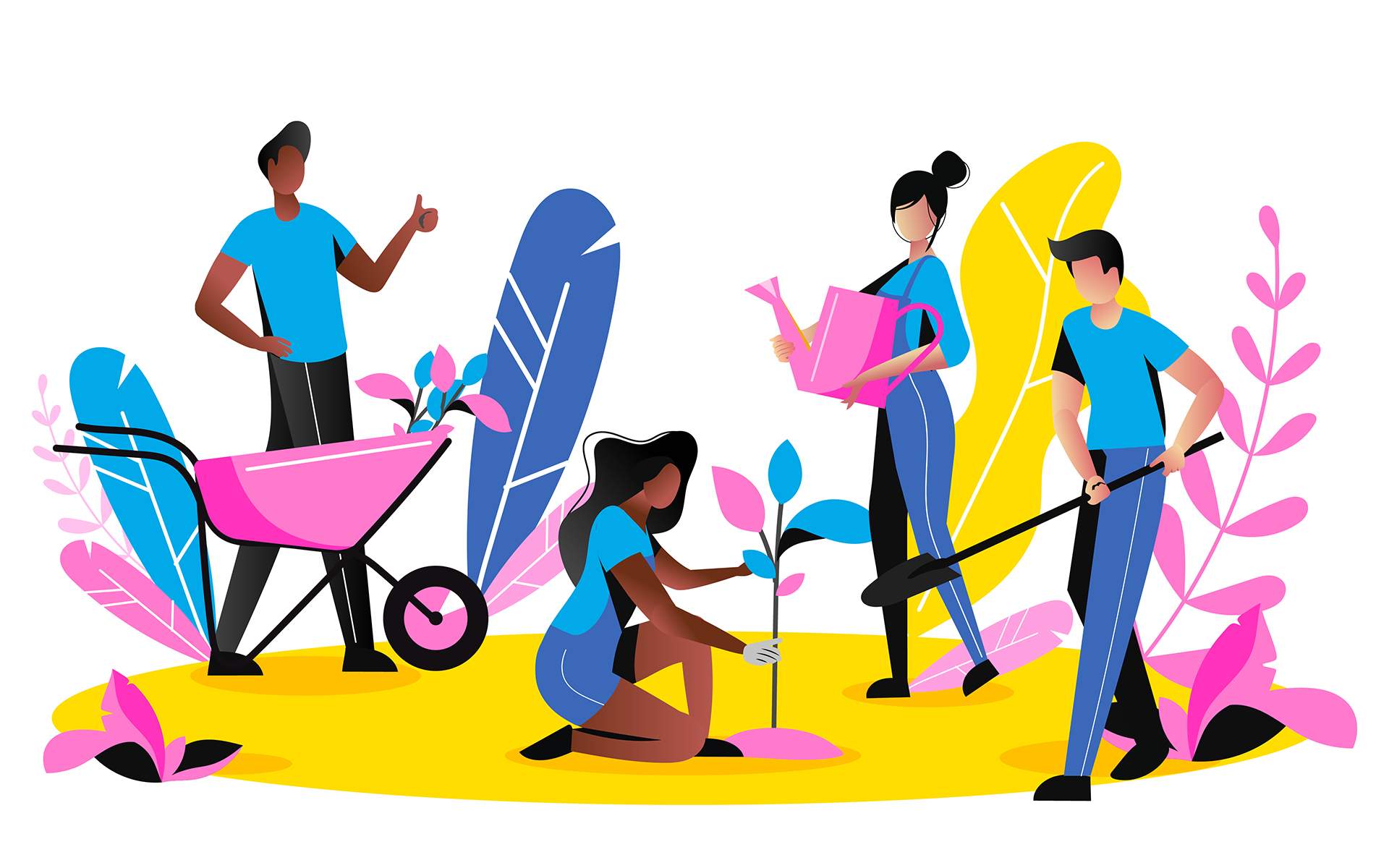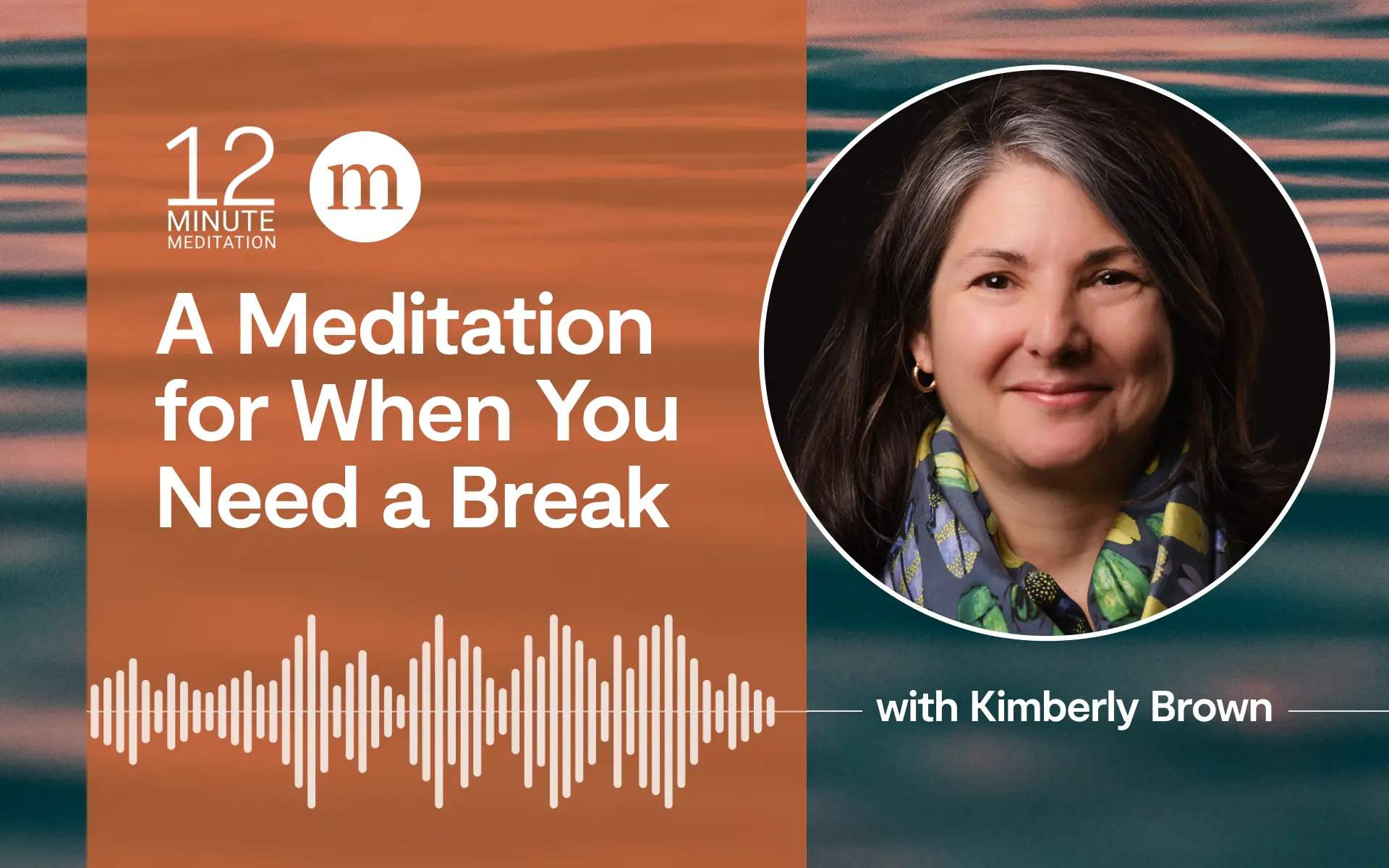Real Mindful: Creating a Mindful Gratitude Journal with Amber Tucker and Paige Sawler
Stephanie Domet: Hello. Welcome to Real Mindful! This is where we speak mindfully about things that matter.
We’re here twice a month, introducing you to some of the teachers, thinkers, writers and researchers who are engaged in the mindfulness movement. You’ll hear all kinds of conversations here about the science of mindfulness, the practice of mindfulness and the heart of it.
I’m Stephanie Domet. I’m the managing editor at Mindful Magazine and Mindful.org. And this is Real Mindful.
This is a time of year when many of us begin to turn our thoughts toward gratitude as the calendar year dwindles. And here in the northern hemisphere, the light does too. We might be inclined to turn inward and reflect on how and where we are and let the feeling of gratitude infuse us. And, you know, sometimes it doesn’t come that easily. And that’s what we’re talking about on Real Mindful today.
We’re marking the launch of our first ever gratitude journal, which appeared on newsstands November 23rd. The journal is packed with personal essays, gratitude practices and the latest science on how and why gratitude works. It’s beautifully illustrated with lots of space for you to write and draw in response to the prompts that are tucked in every corner of it. Amber Tucker is a senior editor at Mindful and Mindful.org and Paige Sawler is our junior designer. And together, they led the team that produced the Gratitude Journal, and the three of us met up recently to talk about the journal, the science of gratitude, and our own relationships with feeling grateful. I hope you enjoy this conversation as much as we did.
SD: Well, hello, both of you, and welcome to Real Mindful Nation. I’m so glad to have you here. It’s such a strange thing for us to do. It’s not strange for us to be together on Zoom, but it is a little strange for us to be together on the podcast. But I’m really glad that it’s happening and that we have this way to celebrate our work in the Gratitude Journal. So thank you for agreeing to this kind of bonkers idea.
Amber Tucker: Thank you so much for hosting this. It’s going to be fun.
Paige Sawler: I’m excited.
SD: Paige, let me start with you. What went through your mind when you were asked to design a gratitude journal?
Paige Sawler: Oh, boy. I mean, it’s my true dream project, honestly. Gratitude has been such a big part of my life forever, so to be asked to lead this project was like—I mean, it’s over, and I still can’t believe that I got to work on it in the first place. It’s definitely the most ‘Paige’ project I could ever do. Anyone who worked on it with me could tell you what my excitement was a lot.
SD: What do you mean when you say gratitude has always been a big part of your life?
PS: I feel like it’s interesting. I was having a conversation with someone the other day about how even in high school, I was always this optimistic, like, really a cheery, happy person. In high school, people did not think that it was very cool to be super happy all the time and I didn’t know the words for what I was feeling, which was gratitude.
Most of the time, I was just constantly grateful for all my teachers who taught me so much and the friendships I was in but didn’t really know what those words were until I graduated, and people gave me some words. I did a couple gratitude journals on my own that had different ways to reflect on your daily life. And really any time that I felt sad or lost, I feel like I’ve always come back to gratitude and all the things grateful I am for everything in my life. It makes me emotional.
SD: I love this intuitive sense of gratitude that’s been this theme in your life. Amber, when we started to work on this journal on the editorial side, we made the backbone of it, this long reported piece by Misty Pratt on the science of gratitude. That language that Paige talks about can be instinctive for some people but it’s something that’s really rooted in research, can you talk about why, for you, it was important to include the latest research into gratitude?
AT: Yeah, absolutely. I will preface this by saying everything you said Paige is so beautiful, and I have often not been that way in my life; I’ve always had a strong, negativity bias. While I do feel gratitude, sometimes it’s hard to really feel it— to kind of let the joy of gratitude come out.
So, I’m kind of coming at it from the other direction. I do find the science really intriguing because especially in the past couple of decades or so, there’s been a lot of really exciting research that’s come out that’s looking at kind of the nuts and bolts of the science of gratitude that includes the benefits it has for the person who is cultivating gratitude, the person who is receiving expressions of gratitude, and how that gratitude ripples out the level of like families and communities.
All of this is peer reviewed research in psychology, business ethics journals, and communications journals so, it’s kind of starting to get out there. We already recognize gratitude and appreciation as virtues, and we often think of the practice like counting your blessings or making a list of things you’re grateful for. Those are kind of like the traditional forms you might already know but now there’s also this science supporting a wide variety of gratitude practices.
So, when Misty went in and explored all of this really interesting research that runs through the journal, we really wanted to make the goal to offer readers this kind of science base and heart centered look at gratitude and all of the beneficial ways that we can practice it.
SD: And Amber, what stands out to you about the current research on gratitude?
AT: I think to me, my favorite thing is the way that the research points to gratitude helping us to move beyond more individualistic ways of thinking about ourselves towards seeing how all of us are really connected.
There is this great quote from psychologist Georg Simmel who calls gratitude “the moral memory of mankind,” or humankind. It makes me think about how wisdom traditions from all over the world have taught us that we can benefit by gaining perspective, humility, patience, and a greater capacity for kindness by recognizing that none of us would be where we are or would have what we have without all the other people and ancestors in societies and the natural world that supports life and all these other things.
So, in that sense, everybody is connected in this very literal way, and gratitude for that doesn’t just help us to get through a tough day or helps us remember to say thank you at the coffee shop; It’s about seeing our bigger picture and how we all belong to each other.
SD: So beautiful. So now Paige, given that you were sort of handed this big task that’s very heart centered and rooted in science. How did you approach this from a design point of view?
PS: Oh, man, I’m just like feeling so much right now. Just hearing you talk Amber really encapsulates so much of what makes me the most emotional about gratitude, that connection. It’s like, Yeah, I’m grateful for my apartment, but I’m like, grateful for the Earth existing.
Anyway, this was a big task, but I approached it with so much help the whole time. I mean, the whole team supported me on this project. I need to give them a lot of love because I feel like there’s no way I would have been able to put as much as I did into it without the backing of my team.
I’m really lucky to have Jessica as my art director who helped me. She puts so much trust in me, lets me have so much fun and just try new things. I got to make it look exactly how I envisioned it. The rest of the team helped so much, like every time I presented a new element or an idea I had, it was always met with such enthusiasm, so it made the work a lot easier. And I also care about this thing so much; It felt very personal to me. So, you know, my passion for the project definitely steered the ship and got me through a couple of late nights…
SD: Just a couple?
PS: Yeah, it’s cheesy but honestly, I just kept going back to how grateful I was to be working on the project any time that I was like, Oh my gosh, there is so much to do and deadlines I was like, I’m just so grateful that this is what I get to be stressed about.
SD: What did you know for sure needed to be included in your design of this gratitude journal?
PS: I mean, I basically wanted it to include everything that I love like photos of cute animals, illustrations, bright colors, fun shapes, some coloring, some hand lettering.
It all sort of stems from the fact that I wanted to include a lot of hand-drawn elements. I wanted the journal to look loose and playful in hopes that it would look welcoming enough to draw people. It’s like sometimes when I start a new journal, whether it’s a notebook or like a guided journal, I have a hard time because it looks so clean and perfect and precise. And so, I kind of wanted this to feel like someone had already made the first mark so it would feel nice to jump in and didn’t have to be afraid to make a mistake or just doodle on the page. I wanted it to feel like it is here for you.
SD: Yeah, that’s marvelous, that idea of making it hospitable and making it a place where someone can try things out; can try the gratitude on for size and see how it fits.
PS: Yeah, it’s like I wanted it to be like a cozy, well-lived cabin instead of like a minimalist modern apartment.
SD: So like cottage core? completely as of the moment. Amber, there are these hospitable moments in the journal amid the science reporting, and there are also these kinds of personal essays and personal takes on gratitude. Can you talk a little about the kind of range of experiences and perspectives that those essays are offering?
AT: Yeah, I think that we approached this project in such an integrated way; in terms of the design and editorial teams on this project. The editorial team supported the design and the design supported the editorial. So that was really great and that really came through for me in the personal essays.
We’ve got Michelle Maldonado, a really awesome mindfulness teacher, talking about how you can adapt your self-care practices to sustain you in challenging times. Someone else we talked to was Jenée Johnson, who looks at how practicing joy and making space for joy in your life is a part of recovering from personal or intergenerational trauma. Kelly Barron has this great essay about how she didn’t initially connect with gratitude very easily as a daily experience—kind of like me—and how she talked to a lot of people from different backgrounds with different experiences about how they practice gratitude, and she gets inspired to add to her toolbox of gratitude practices.
So this is really a wide range, but I feel like they all kind of share the message that wherever you are in your mind, you don’t need to kind of try to conform to a certain image of where you think you should be. You can feel comfortable bringing your whole self to the practice with these people who are really writing and speaking honestly and with this really beautiful and kind vulnerability about where their journeys have taken them.
SD: I really love that wide lens on what gratitude practice can include and where you can start it from, which is, as you say, can be wherever you happen to be standing in this moment.
Having that variety kind of applies to not just the practice, but the variety of ways to engage with this. Referring to our earlier conversation about, you know, Paige, your gratitude orientation and Amber your gratitude orientation being so, so opposite but you’re both speaking about it with such warmth, heart, and vigor. And as you say, Amber, there isn’t this need to sort of conform to be a certain way before you begin this practice.
AT: Mm-hmm. Yeah, exactly. Like it’s really available and accessible to everyone and we really wanted that to come through. This isn’t just an exercise in forcing yourself to be more positive; that can be, at times, just as unpleasant as feeling negative. But it’s really about exploring and trying little adventures and practices to find where that gratitude seed starts to bloom for you. That’s not the same for everyone and we wanted to honor that here. All our writers and teachers did a really great job kind of helping us to reflect that.
SD: Yeah, the teachers are offering all sorts of direct gratitude practices so people can get, you know, practical on that level. Do you want to talk a little bit about the teachers who are represented and the kinds of practices that they’ve brought to this journal?
AT: Oh yeah. This is where I wish I had my copy of the journal to look through, but we had so much fun. You know, me and a few other members of the ED team, just pondered over so many different teachers and different practices for this project, and that was really fun.
It was really hard to narrow it down to the 15 practices that ended up being in the journal. But we have some teachers who may be familiar to a lot of readers. People have also written a lot of books like Barbara Boxer and Sharon Salzberg, too, who kind of have their big names in the mindfulness community.
We also have some really fantastic gems of teachers who we’ve been working with for years here at Mindful. People like Shalini Bahl-Milne, who has this beautiful practice for reflecting on all the different roles that people play in your community and sending out gratitude to how everybody keeps the community going and takes care of each other. And we’ve got one from Shelly Tygielski, who has a lovely practice for cultivating a sense of gratitude through your whole body. We often think of gratitude as kind of feeling it, maybe in the heart, but she helps us to relax enough to feel it in our whole body.
Ghylian Bell shares a practice that I believe kind of looks at the same kind of goal but she takes a slightly different way about it; It’s a really beautiful body gratitude practice. Elaine Smookler talks using all your five senses to help you tune in to the world around you and really like to notice those little things that you might overlook. That you can feel gratitude for waking up in the morning and seeing the sun peep through your curtain, smelling the coffee downstairs, feeling a soft blanket, and all of just all these little, tiny moments of gratitude that are just kind of waiting for you to notice them. There are just so many and they’re all so good.
SD: And Paige, the other sort of major character in this gratitude journal, is the illustrator and their beautiful illustrations. What do you want to say about the illustrator you worked with?
PS: Oh, Geraldine was amazing! I’m so glad that I got the chance to work with her. I brought together 10 or so illustrators for the team to look at in the beginning, and everyone was drawn to her work immediately so I’m really glad that she was up for the challenge.
She nailed the feeling that I was imagining for each spread because we have five different sections in the journal. With each one I had a specific vision in mind. With the body section, one was playing outside and just being in nature; Looking up at the sky, there’s flowers, there’s birds and the colors are beautiful. The feeling I get when I look at the illustrations could not have gone better.
SD: One of the parts that I worked on was pulling in the writing prompts from the writer and teacher, Jane Anne Staw. Those are beautifully distributed throughout the journal, with lots of space for folks to kind of explore their own experience of gratitude. Paige, What was really important to you in working with the writing prompts?
PS: I mean, they’re all so different and so special. I’m really glad that we got the chance to work with her and get those from her. Again, I wanted those prompt spaces to feel very organic and loose so that people wouldn’t be afraid to make their mark. They’re just a big, wide, open blank space. There’s no lines. There’s no guides. You can do whatever makes sense to you, whenever you feel. Whether that’s a doodle, writing a bunch of little bullet points, or writing a little essay for yourself. I really wanted it to be open to wherever you are.
Like Amber was talking about, some people are further along in their practice than others. So, it didn’t want it to feel like, Oh, you have to fill this space perfectly, there’s 20 lines and this is all you have to work with. It’s very abstract, open-ended and a lot of those pages also include things like, maybe there’s a little coloring in the corner. So, while you’re thinking about this prompt and how that makes you feel, you can do a little coloring, processing, and thinking about it. I wanted it to be like an experience, of course.
SD: Amber, I’m curious about how or if your relationship with gratitude changed through working on this project.
AT: Of course, like this is a whole project that we’ve been working on for at least a year and it has kind of sunk into my psyche, I think, in certain ways that has kind of become clear to me how embedded mindfulness and gratitude are together. They’re not really two separate things to me anymore; they’re both just kind of facets of the same thing.
I kind of think of it like if you’re willing to be truly present with yourself and with whatever and whoever is in front of you, then in a sense, you are showing up with gratitude for this moment that you’re in. And I’m definitely not saying I can always feel the truth of that, not by any stretch, but it kind of comes through for me at moments when I don’t expect it to.
Sometimes if I’m actually doing some kind of a mindfulness practice and I’m like, Oh, I’m noticing gratitude. It’s cool that that’s also present. Or say, like, here in Halifax, we saw this really amazing double rainbow and we were all going nuts about it. I just happened to see it out the window beside my desk at home and I was just like, in total awe. The fact that this rainbow is like right here and it looked so close, and I was just kind of speechless about it, and I felt a lot of gratitude for that kind of moment.
So just these places where gratitude is not expected, it’s not forced on it or not kind of compelling myself to feel it but giving it the space to arise when it arises and not trying to guilt myself into feeling gratitude. I guess what I’m trying to say is that I’m getting more comfortable with my own relationship with gratitude, and that is helping it to expand.
SD: Oh gosh. Well, who could ask for more than that? I feel like that is the goal, right? Yeah, that’s wonderful. Paige, what do you hope readers get from spending time with this gratitude journal?
PS: The thought of people holding this spoon makes me emotional. I just hope that they feel the love that we put into this thing. That is the thing that I hope for the most; that when they hold it, they feel how much we care about it. And when they sit down with it, I hope it’s like hugging a friend or sipping a cup of hot chocolate. Those are the visual metaphors for what gratitude feels like for me.
I tried to put that into the story so that other people could feel that too. I hope they use it to spend some quality time getting to know themselves a bit more. I know a lot of people have a hard time with sitting down, facing some stuff and realizing, Oh, this is what gratitude is. I hope it helps them become more aware of all the little things in their life, like the big double rainbow, the window, how taking a moment to look at that, getting outside and just staring at it all and being grateful for the fact that it exists. That’s not nothing. That’s a wonderful moment. That’s beautiful. And I hope that more people are able to take a look at those things in their lives and appreciate them and feel grateful.
SD: Well, I have to say that I have preemptively sharpened my colored pencils, have brought in a stack of wood, lots of kindling for the wood stove, and I have my hot chocolate mug ready to receive my customary afternoon hot chocolate. And I think that is going to be perfect for me. And that kind of full circle on working on this gratitude journal with all of you as to then sit down and work on it with myself.
PS: Yeah, that’s like the best part ever. It’s like we got to make this thing and now we get to use it, experience it, and color it. It’s amazing.
AD: I think you should just expect for me to show up with my gratitude journal and we can just sit in front of that fire together.
SD: I will set out a second mug!
PS: Yes, it’s a gratitude party!
SD: Oh, there’s no party like a gratitude party. That’s how that’s saying goes right?
PS: Yeah.
SD: Well, thank you both so much for your work on this incredible journal and for joining me today in conversation. It’s such a pleasure to talk to you this way.
It was such a joy, just just hearing you both speak about this thing that I also love so much and hearing of other people that also worked on it and love it so much. I hope that others love it as much as we do.
SD: That was our junior designer Paige Sawler and senior editor Amber Tucker. You can find more about gratitude in the December issue of Mindful or, of course, at Mindful.org. You can also find our brand new gratitude journal at a newsstand near you. You can also order it directly from us by going to mindful.org.
In fact, we’re offering you our podcast listeners a special deal so you can get your gratitude journal from us at 30% off. Do that by heading over to mindful.org/journal. Place your order and the discount will be applied automatically at the checkout. And listen, we would love to hear from you about it. You can email us at yourwords@mindful.org or tag us on social media on Instagram at Mindfulmagazine, or on Twitter at MindfulOnline. You can find us on Facebook or LinkedIn. It would mean so much to us to see your photos or hear from you about how you use your gratitude journal.
Here is something else we would feel grateful for. If you’re inclined to review this podcast, you can leave a review wherever you find your favorite podcasts, and your review can help other listeners decide whether they should take a chance on Real Mindful. We’ve also been celebrating gratitude on our 12-minute meditation podcast this month, so if you’re keen to get started with some guided practices, you’ll find several on 12-minute meditation.
You can subscribe to that wherever fine podcasts are found, and we’ll be back with another episode of Real Mindful in December. Till then, may your colored pencils be sharp, your chocolate be hot, your fire be cozy and your gratitude be plentiful.
Shownotes
Enjoy our Mindful Gratitude Journal with a discount applied at checkout here
Experience two weeks of Gratitude with our Mindful gratitude calendar here: The Mindful Gratitude Calendar
Find more artwork by Geraldine here: Geraldine Sy Illustration
And more from Mindful here:
December issue of Mindful magazine: The Science of Mindfulness
More Real Mindful podcast episodes
The 12 Minute Meditation practice podcast
And don’t forget to let us know what you thought by emailing yourwords@mindful.org.
READ MORE
The Mindful Gratitude Calendar
Bring the practice of gratitude into your daily life with this two-week journey inspired by our Gratitude Journal.
Read More
Ruth King on Planting Seeds for the Future
Teacher, author, and trained clinical psychologist Ruth King talks with Mindful managing editor Stephanie Domet about how her mindfulness practice helps her navigate rocky terrain, while looking toward the future.
Read More
How Stories Shape Us with Barry Boyce
Managing editor Stephanie Domet is joined by founding editor Barry Boyce for a personal conversation about stories and storytelling—a topic that has always been a pillar in both of their careers.
Read More










